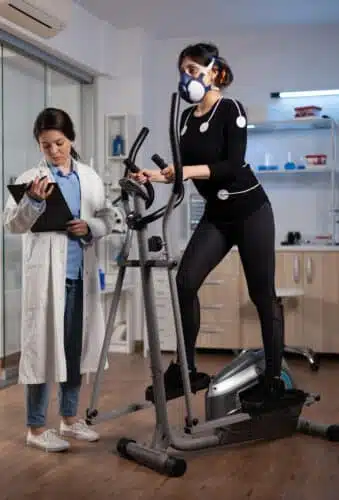The study expands on a previously-awarded proposal to thoroughly explore the underlying pathophysiology of post exertional malaise (PEM), the hallmark symptom of ME/CFS.
The hallmark symptom of ME/CFS is the flu-like worsening of symptoms after physical, mental, or emotional exertion. This is known as post exertional malaise (PEM). The study expands on a previously-awarded proposal to thoroughly explore the underlying pathophysiology of PEM.
The researchers will use a 2-Day CPET protocol that has been established previously to examine whether there were any functional changes in the mitochondria. To do this, they will take a biopsy of the vastus lateralis, which is one of the four major muscles in the anterior thigh, and isolate specialized immune cells from blood samples taken before and after exercise.
Dysfunction of the mitochondria has demonstrated decreased ability to use oxygen during exercise and possible interference in energy production. The impact of PEM on ventilatory and pulmonary gas exchange measures will also be assessed.
Specifically, we will look at changes in how the patients utilize oxygen, their achieved workload, and how efficiently they respired at peak exercise and at the ventilatory threshold. (The ventilatory threshold is also known as the point at which the body becomes more dependent on acquiring energy from mechanisms not involving oxygen.)
With this data, the researchers will compare measures within and between groups to demonstrate the effect of PEM in ME/CFS patients due to exercise.

1. Assess the relevance of mitochondrial dysfunction after acute exercise to post exertional malaise.
2. Determine the prevalence of red blood cell deformability in ME/CFS.
Donate your appreciated stock directly to OMFCA and you can receive an immediate income-tax deduction for the fair market value of the securities on the date of transfer (even if you originally paid much less for them).
OMFCA sells your securities and uses the proceeds to support our mission. You also do not pay capital gains tax on the transfer when the stock is sold. Giving appreciated stock can be more beneficial than giving cash. The “cost” of your gift is often less than the deduction you gain by making it. In advance, thank you for making this generous gift.
Gifting of Stock Instructions
Brokerage/Investment Firm: TD Waterhouse
Name on the Account: Open Medicine Foundation Canada
Account Number: 20LRHLA
OMFCA Canadian Revenue Agency (CRA) charity registration #: 74926 5518 RR0001
OMF Canada Registered Address:
Open Medicine Foundation Canada
2987 Baynes Road, Victoria, BC V8N-1Y4
Phone Number: 416-848-0055
Please speak to your personal tax advisor and then call OMFCA at 650-242-8669 to notify us of your donation or with any questions.